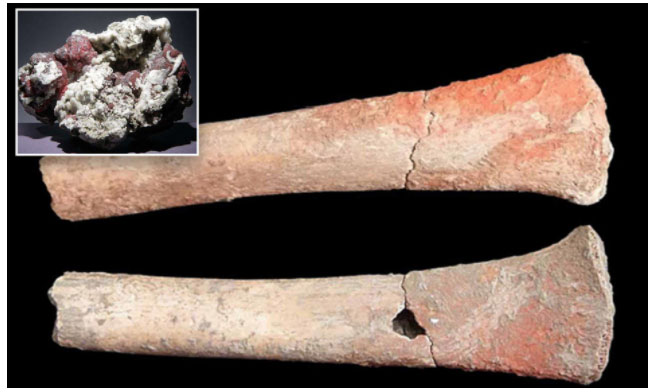Scientists have discovered the first evidence of mercury poisoning in the 5,000-year-old human bones found in Spain and Portugal, leading to horrific deaths.
Mercury poisoning is a type of metal toxicity caused by exposure to mercury, which has numerous effects on the human nervous, digestive, and immune systems, and can even lead to many tragic accidents. Recently, scientists have found the oldest evidence of mercury poisoning in humans.

Evidence shows that prehistoric humans were exposed to mercury.
Unusually high levels of mercury were found in the bones of humans who lived about 5,000 years ago in various regions of Spain and Portugal.
About 370 individuals from the Neolithic and late Bronze Age were identified with high mercury levels. It is known that mercury levels reached up to 400 parts per million in some remains, which is significantly higher than the 1 or 2 ppm that the WHO defines as normal in human hair.
A team of scientists from the University of North Carolina Wilmington stated that the mercury poisoning was due to their exposure to cinnabar, a mercury sulfide mineral that naturally occurs in hot and volcanic areas around the world.
When cinnabar is crushed, it transforms into a bright red powder. Historically, this powder has been used to produce pigments in paint or as an ingredient in certain “magical” medicines.
During that time, cinnabar became a highly symbolic substance, even considered sacred, and was sought after, traded, and widely used in many spiritual rituals. Some tombs and decorative statues were painted with cinnabar, sometimes with the powder sprinkled on the deceased.
The lead scientist of the study stated: “Mercury sulfide was widely used in Iberia, as well as in many other prehistoric cultures around the world. Ancient people used this substance in burial and interment rituals or as a body paint or possibly as a medicinal remedy.”
The findings come after collecting evidence, analyzing, and studying 370 individuals from 50 graves scattered across 23 archaeological sites throughout Spain and Portugal. According to researchers, the deceased may have accidentally inhaled or even ingested the substance, leading to the unusually high mercury levels in their bones.


















































